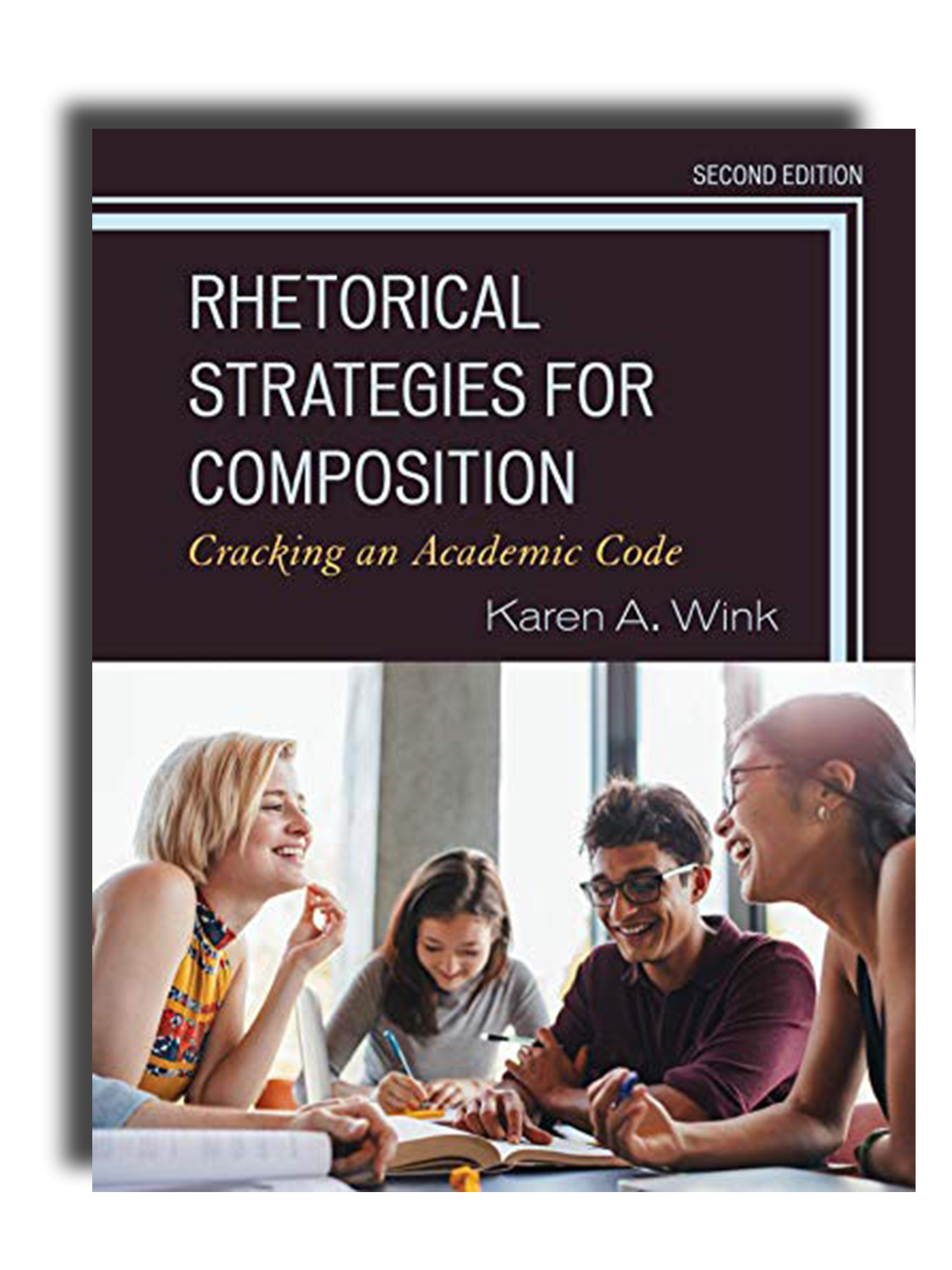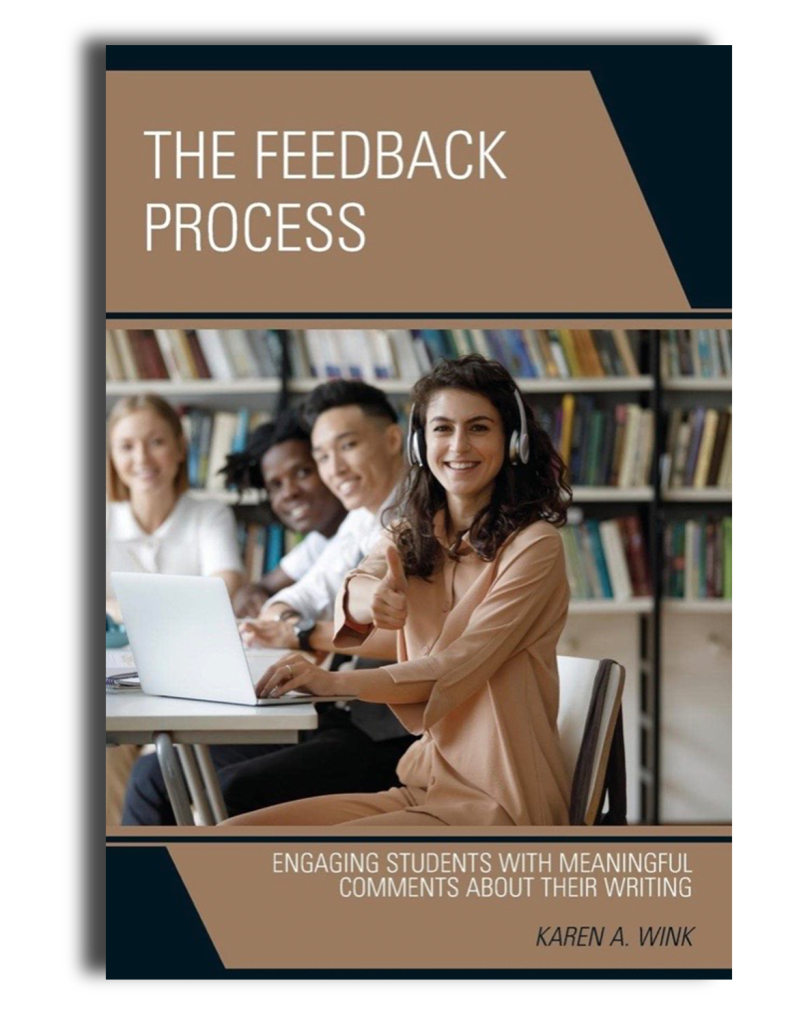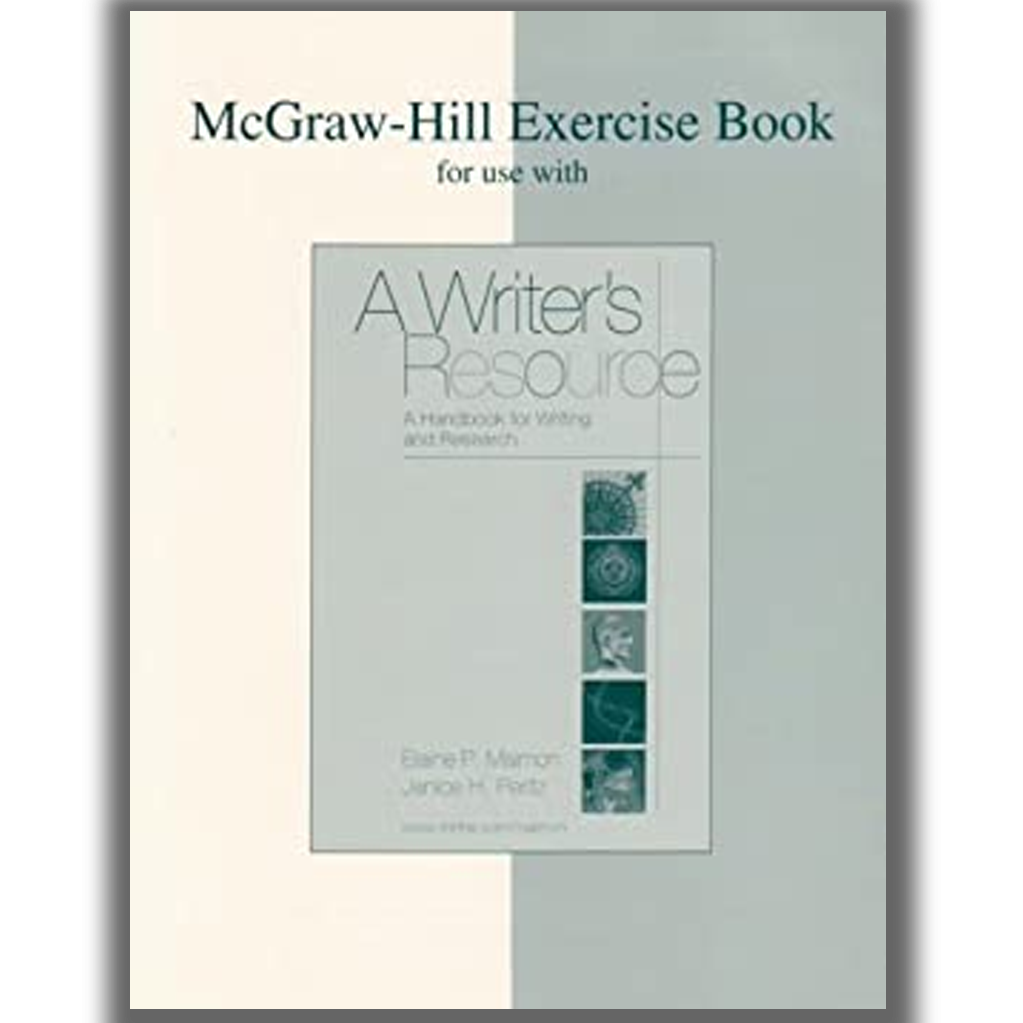
RHETORICAL STRATEGIES
FOR COMPOSITION
CRACKING AN ACADEMIC CODE,
2ND EDITION
Rhetorical Strategies is a worktext for composition students to apply rhetorical theory in their writing. The exercises interconnect rhetorical skill work for students to practice “thinking on paper” in style (rhetorical figures, emphasis, arrangement); language (audience appropriate, diction, syntax); and conventions (MLA style, format, source handling). Content includes: Aristotle’s Six Parts of an Argument, Rhetorical Situations, Appeals and Fallacies, Thesis Statements, Topic Sentences, Voice, Stylistics, Revision, Documenting Sources, Grammar/Punctuation/Usage, and Visual Arguments. All skills are reflected in a sample student research paper. Content is relevant for AP Composition and Language courses as well as college composition and seminar courses with an emphasis on rhetorical principles.
Instructor’s Guide for Rhetorical Strategies: Cracking an Academic Code
Table of Contents
Acknowledgments
Introduction
1: Rhetoric
2: Forming an Argument: Aristotle’s Parts of an Argument
3: Rhetorical Situations
4: Appeals and Fallacies
5: Voice
6: Stylistics
7: Revision
8: Documenting Sources
9: Grammar, Punctuation, and Usage
10: Visual Arguments
Appendix I: Sample Research Paper with Audience Analysis:
Angela, College Freshman, Composition Course
Audience Analysis for Angela’s Research Paper
Appendix II: Answer Key and Reference Lists
Works Cited
About the Author
Further Endorsements
Karen Wink’s text offers the essentials of classical rhetoric for writing students in a textbook that is brief, clear and yet amazingly thorough. Using questions as headings, Wink covers everything from assessing the writer’s initial rhetorical situation, to the five parts of an argument, the appeals of ethos, pathos and logos, and the common fallacies, down through matters of style, revision, documentation, and proofreading. Traditional material like the writing process is covered, but in a way that makes them part of the overall strategy of a well-designed argument. At the same time, less frequently covered topics are included so that students acquire a deeper appreciation of rhetorical argument, as in Wink’s version of the stases combined with the topics in Chapter 2, or her especially strong coverage of Style in a chapter (6) that includes a useful list of figures of speech and methods of sentence analysis and invention. Drawing on her years of classroom experience, Wink includes published and student-written examples throughout, as well as useful tables, checklists and exercises that immediately apply the material just explained. Altogether, Karen Wink’s text covers everything needed for a complete, rhetorically-based writing course in the most engaging and student-friendly way possible.
— Jeanne Fahnestock, professor of English, University of Maryland; author of Rhetorical Figures in Science and coauthor of A Rhetoric of Argument
Wink’s clear explication of the assumptions underlying academic and professional writing persuades us of the continuing relevance of classical rhetoric. The textbook’s contemporary examples, practical exercises, and tools for revision will engage composition students from high school to upper-division undergraduate level.
— Faye Ringel, Professor Emerita of English, U.S. Coast Guard Academy

THE FEEDBACK PROCESS
ENGAGING STUDENTS WITH MEANINGFUL
COMMENTS ABOUT THEIR WRITING
The Feedback Process: Engaging Students with Meaningful Comments About their Writing features curriculum and instruction to assist humanities educators with commenting on student drafts. The focus is on students’ non-fiction writing or arguments supported with credible sources. To make a complex process more accessible, this book features strategies for both written and auditory commentary. To make the process more efficient, it includes surveys, feedback models, rubrics, lists of useful comments, and sample student drafts (with commentary). This book draws from classroom research to discuss strategies for managing students’ emotional responses to feedback, as well as instructors using tone and word choice constructively for greater impact on drafts. The Feedback Process ultimately aims to lessen the burden on instructors and educators who comment on a substantial number of papers every semester, with a fresh approach to feedback.
Table of Contents
Preface
Introduction
Chapter 1: Feedback Process
Chapter 2: Writing Assignments
Chapter 3: Assessment
Chapter 4: Rubrics
Chapter 5: Commenting Vocabulary
Chapter 6: Written Commentary
Chapter 7: Audio Commentary
Chapter 8: Emotional Component
Chapter 9: Feedback on Feedback
Chapter 10: Feed Forward
Appendix I: Terms from Feedback Process
Appendix II: Case Study of Formative and Summative Online Comments for Half- and Final Drafts of Research Paper, English Composition Course
Appendix III: Case Study of Formative and Summative Online Comments for Rough and Final Drafts of Research Paper, Freshman History Course
Appendix IV: Student Survey, Writing Practices and Feedback Process
Bibliography
Index
About the Author
Further Endorsements
The Feedback Process represents one of those rare instances in which the author manages to integrate current theory, research, and best practices clearly and seamlessly. Instructors are provided with the most effective insights and strategies to implement for the relentless task of providing informative and comprehensible written and auditory commentary for high school and college students constructing persuasive papers across academic disciplines in the humanities. This book is grounded in the thinking that writing for audiences across disciplines is a social act and its effectiveness is enhanced by its dialogic approach to feed-forward. That is to say, the feed-forward process provided by the instructor initiates a dialogue with the student writer to resolve misunderstandings between the instructor’s intentions and the student’s perceptions of those intentions. Dr. Karen A. Wink offers teachers the most comprehensive resource for approaches for initiating commentary on student writing that have potential to improve student writing performance.
— Wayne H. Slater, professor of education, department of teaching and learning, policy and leadership, college of education, University of Maryland; co-author of “Academic and Professional Writing in an Age of Accountability”
Attending to a crucial—and crucially neglected—aspect of pedagogical instruction, Dr. Karen A. Wink’s clear, specific, and extremely useful guide to providing feedback on student work, The Feedback Process: Engaging Students with Meaningful Comments About their Writing, has much to offer fledgling and seasoned instructors alike.
— Jeffrey Andrew Weinstock, professor of English, Central Michigan University; author of “The Mad Scientist’s Guide to Composition”

THE MCGRAW-HILL EXERCISE BOOK
TO ACCOMPANY A WRITER’S RESOURCE
(2009) MAIMON et al.
Dr. Wink was a contributing editor who made comprehensive edits to sentence-level and citation exercises so they were more relevant, culturally-based, and accessible to diverse students. Often taught in composition classes, these exercises offered students refreshers and extra practice during writing process to polish their papers, reports, and other types of writings for different audiences.
Table of Contents
Writing Thesis Statements and Paragraph Organization
Research and Documentation (MLA Style)
Grammar
Clarity/Conciseness
Punctuation, and Spelling

